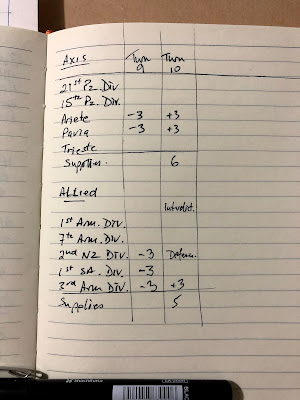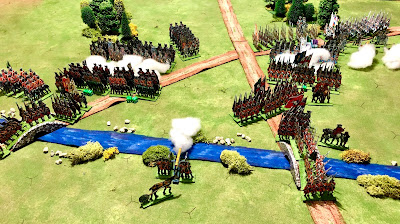I have had the rules "Men Who Would be Kings" by Daniel Mersey for a while now and with the intention of doing some colonial wargaming. Apart from other projects, one thing that was holding me back was which colonial area to cover? Should it be Zulus, Dervishes, Northwest Frontier, etc. In the end I settled on North Africa and the French, and in particular those activities of the French Foreign Legion. I suspect in the back of my mind was the idea of recreating those old Beau Geste style Hollywood films.
The next question was what figures to use. I did notice there were some ranges in 1/72 plastic which were reasonably priced, but I was thinking the larger figures, possibly 1/32 scale would be fun. I don't have any 1/32 scale figures for wargaming, and I really enjoy a number of blogs which show the larger traditional old style figures, and often cast the figures themselves. Not that I want to get into home casting, but I do like the idea of making my own figures somehow. Particularly figures looking like the old toy soldiers.
Over the last couple of years I have been creating Paper soldier armies from Peter Dennis' books, these include: Jacobite armies, Norman and Saxon armies, and most recently War of the Spanish Succession armies. I have become quite fond of the paper armies which are flat figures. So the question was how could I create some flats with a traditional toy soldier look.
To get some inspiration I looked through "The Collectors Guide to Toy Soldiers" which was a present from many years ago. It has lots of nice pictures mainly of Britains figures, but near the front there are some wonderful pictures of simple flats produced in France and Germany which got me thinking. Could I create something from cardboard?
 |
| The source of possible inspiration |
A few prototype figures were created and some discarded before I came up with the following approach. In the back of my mind was always the question - is this a quick and easily repeatable process? As whatever I make I will be doing a hundred or more times over to produce a wargaming army.
 |
| Lots of inspiration was found in the pages |
The first step to assist with building a prototype was to take a few photos of a figure I want to use as a model and load it into Google Slides (or PowerPoint would work) to resize, duplicate and flip the image. The required figure was then cut out and stuck to card (note - 600 GSM weighted card was found to be best so far, but more on that later). This included the arms which are also cut out from a separate image and stuck on card.
 |
| The body and arms cut out and stuck to the card. |
 |
| The body is stuck again to card to get double thickness. A glue-stick is used for gluing at this point. Later PVA all purpose glue is used. |
Once the body was cut out it was stuck again to the card and cut around. This aim of this was to create more stiffness, and it is easier to cut out two thinner pieces are card and stick them together than cut out one thicker piece of card.
Once the thickened body was cut out the single thickness arms are stuck on and the figure attacked to a stand. The stand again is made from card with the figure stuck between two bits of card to provide stability.
 |
| The arms are stuck on and the figure based |
Once all dry the figure is given a couple of coats of PVA glue and a final grey undercoat.
 |
| Once made the figure has two generous coats of PVA glue and an undercoat of grey acrylic paint (from the hardware store) |
The figure is then ready for painting. I am sticking with the toy soldier look when it comes to painting, but do use a little bit of shading on the legs and highlighting on the dark jacket. Anyway, here are the second and third prototypes. (We don't talk about the first prototype, no salvage opportunities there.)
 |
| 3rd prototype on the left and 2nd prototype figure on the right. |
 |
| Looking head-on at the figure |
 |
| The figure ended up being just over 2 inches or close to 54mm tall |
Next up I am going to try just one sheet of card for the body as this will simplify the making of these figures, and then create a figure using tracing paper with just the outline and key parts of the uniform to help with painting, almost a paint by numbers approach.
The figures have a very toy-like appearance that I quite like the look of. I will be progressing with this as a background project.
If you are wondering about the Ancients project, it is still on the go. All the Roman forces have been washed and are now ready to start painting.
 |
| Roman figures getting a wash and soak. |







































